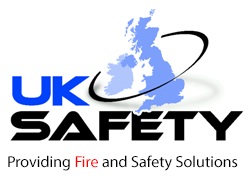Tougher sentencing in the pipeline for health and safety offences
On 3 November 2015, the Sentencing Council (the Council) published the guidelines on Health and Safety, Corporate Manslaughter and Food Safety and Hygiene offences.
The long awaited Guidelines were published alongside the Response to Consultation and come into force on 1 February 2016.
The guidelines
The Guidelines apply to companies or individuals (aged 18 and older) who are sentenced on or after 1 February 2016, regardless of the date of the offence.
The Guidelines set out a number of steps that the sentencing court will need to go through to establish the appropriate fine. Firstly, the court will need to determine the category of offence. This is based on two stages, the level of culpability and the level of harm. Secondly, starting points (which apply to all offenders, whether they have pleaded guilty or been convicted after trial) define the position within a category range from which to start calculating the provisional sentence. The court is required to focus on the organisation’s annual turnover or equivalent to reach a starting point for a fine. The court then consider further features of the offence or the offender that warrant adjustment of the sentence within the range, including aggravating and mitigating factors. Credit for a guilty plea is taken into consideration only after the appropriate sentence has been identified.
Consultation
Responses to the consultation included whether linking fines to turnover was ‘too rigid and overly simplistic’ and would lead to firms of varying sizes receiving grossly different fines for similar incidents. The Council has, however, adopted this approach and stated: ‘We accept that using turnover to determine the size of a business is something of a blunt instrument but we believe the overall sentencing process in the proposed guideline gives sentencers the flexibility they need to ensure the interests of justice are served.’
Very large organisations
It was proposed that a proportionate multiplier be included in the Guidelines to clarify a suitable calculation when imposing fines for very large organisations (i.e. those with turnovers greater than £50 million). The Council decided not to include such a feature within the Guidelines as to do so could, due to the complexity of sentencing very large organisations, hinder sentencers and would conflict with the guidance to ‘consider the financial circumstances of the organisation in the round.’ This also maintains consistency with the approach in the environmental guidelines.
Instead, the Guidelines state: ‘Where an offending organisation’s turnover or equivalent very greatly exceeds the threshold for large organisations, it may be necessary to move outside the suggested range to achieve a proportionate sentence.’
How tough are the new proposed fines likely to be?
Under the Guidelines a large organisation that commits an offence with the greatest exposure to harm (for example, a fatal accident) and with high culpability will see a sentencing range of £4.8 million – £20 million with a starting point of £7.5 million. Large food operators that commit a food safety offence with a serious adverse effect on human health with high culpability will see a sentencing range of £500,000 – £3 million. Individuals that commit serious offences with high culpability can expect custodial sentences or serious fines where profit was a motivating factor in the commission of the offence.
Summary
Companies need to start taking this very seriously. The message in the Guidelines is that:
‘the fine must be sufficiently substantial to have a real economic impact which will bring home to both management and shareholders the need to comply with health and safety legislation.’
Shooesmiths




